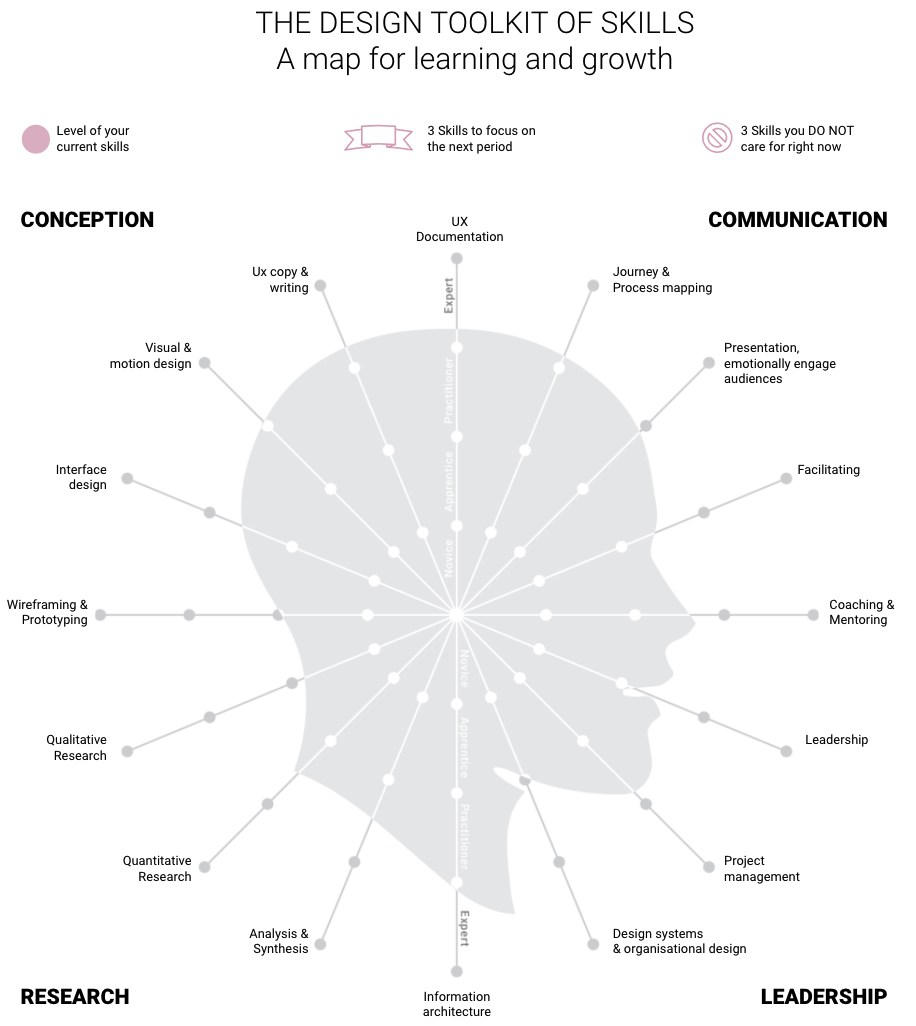Stage 1 - Identify learning goals and find the intrinsic motivation
In the initial stage, participants identify their learning objectives with the facilitator's guidance. Through a coaching approach, the facilitator aids participants in uncovering intrinsic motivation linked to these goals. This understanding often surfaces during personal sessions, where participants can candidly connect their learning goals to professional and, at times, personal hurdles.
This stage typically spans two sessions, with a break in between for participants to reflect more profoundly. A single session might not provide ample time for participants to deeply connect their learning intentions with their present challenges.
You can find the Facilitator Script and The Skill Toolkit template in the ALTE Toolkit.
📝 Author note: In my experience as a manager of large teams, I enjoy taking the time with each team member as it allows me to dig deep into their learning goals as I find out about their current work-related challenges, career goals and how they see the workplace world.
Before the meeting - Introducing the Skill Toolkit
The facilitator introduces the Skill toolkit to the participant. Then, they will ask the participant to identify, after this meeting, three skills that they want to focus their learning on in the next period. Also, asks them to identify three skills that they care the least to learn about right now.
At the end of this meeting, ask them to prepare for the next meeting:
The current mapping of their Skill toolkit and the top and lowest three skills of interest on this chart.
-
The Skill toolkit can be modified, and the facilitator can enter the skills relevant to the team. Other tools can also be used to help participants identify the learning goals. I found that some participants had a hard time finding a learning goal without a visual tool or a list of skills to guide the participants. The Skill toolkit is also a great tool to visualize, as a group, which learning category is popular in the group.
1st session - Finding the Intrinsic Motivation
The facilitator and participant review the top and lowest 3 skills in this meeting. The facilitator is enquiring why are those three skills essential and why. Same for the three lowest skills chosen.
This session is the key to understanding the intrinsic motivation behind the learning goal. In addition, this conversation is vital since some of the items on the skills chart are coded behind concept keywords. For example, leadership holds a different definition for each participant.
This is an example of a completed chart.
At the end of this meeting ask them to prepare for the next meeting:
Reflecting on how they will enhance specific skills and actively working towards them. Encourage the creation of a "course plan" outlining steps to achieve their learning objectives. For instance:
Set 1-2 measurable targets per skill: e.g., conduct three workshops, read ten articles, finish two books, or complete two certifications.
Establishing a method for tracking their progress and documenting newfound insights. They could utilize tools like a Google doc, a Miro board, or even post-its on a wall.
-
“Leadership” as a skill might mean very differently from person to person. For example, for some might mean conflict management, for others might mean pitching ideas or getting the message across and so on.
This session needs to surface the reason behind the learning and the picked skill and could help the participant name some of their current challenges and how the learning goal is a hope to help resolve those challenges.
Understanding the lowest interests might also show some blind spots in the IC perception of a particular skill. For example, if someone chooses Leadership as the top skill and Storytelling as the lowest skill, the connection between Leadership and inspiring others might not be there.
Sample of questions to ask to help surface the intrinsic motivation:
What made you pick these three skills?
What makes this skill important to improve right now?
What does “skill name” mean to you?
How will this “skill name” help you in your growth or/and current mandate?
What makes these three skills of least interest right now?
2nd session - The “course plan”
Participants will arrive with a course plan detailing resources and strategies to enhance their learning objectives. This plan may include seminars, books, new project initiatives, adopting fresh practices, specific actions, or joining relevant groups.
The facilitator's responsibility is to refine this list. For instance, if a participant has 30 activities, the facilitator should help narrow them down to a feasible number, ensuring the participant doesn't spread themselves too thin and risk the initiative's success.
At the end of this meeting ask them:
How will I track and measure my progress?
What tools or methods will I employ to document my learnings for future reference?
At the end of this stage participants should all have:
Clearly defined learning goals.
A detailed course plan tailored to each goal.
An established system, such as a note board, to track and measure their progress.



